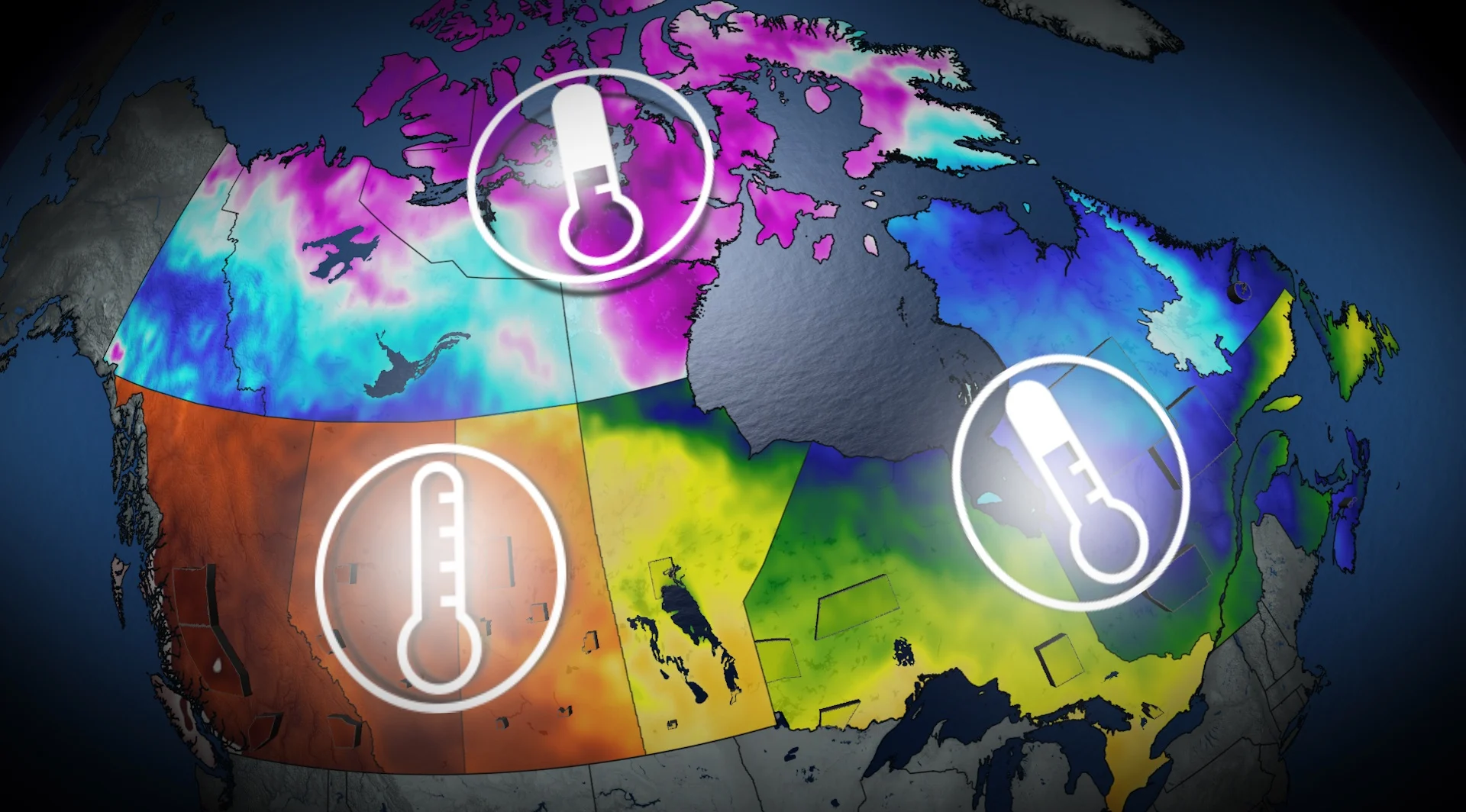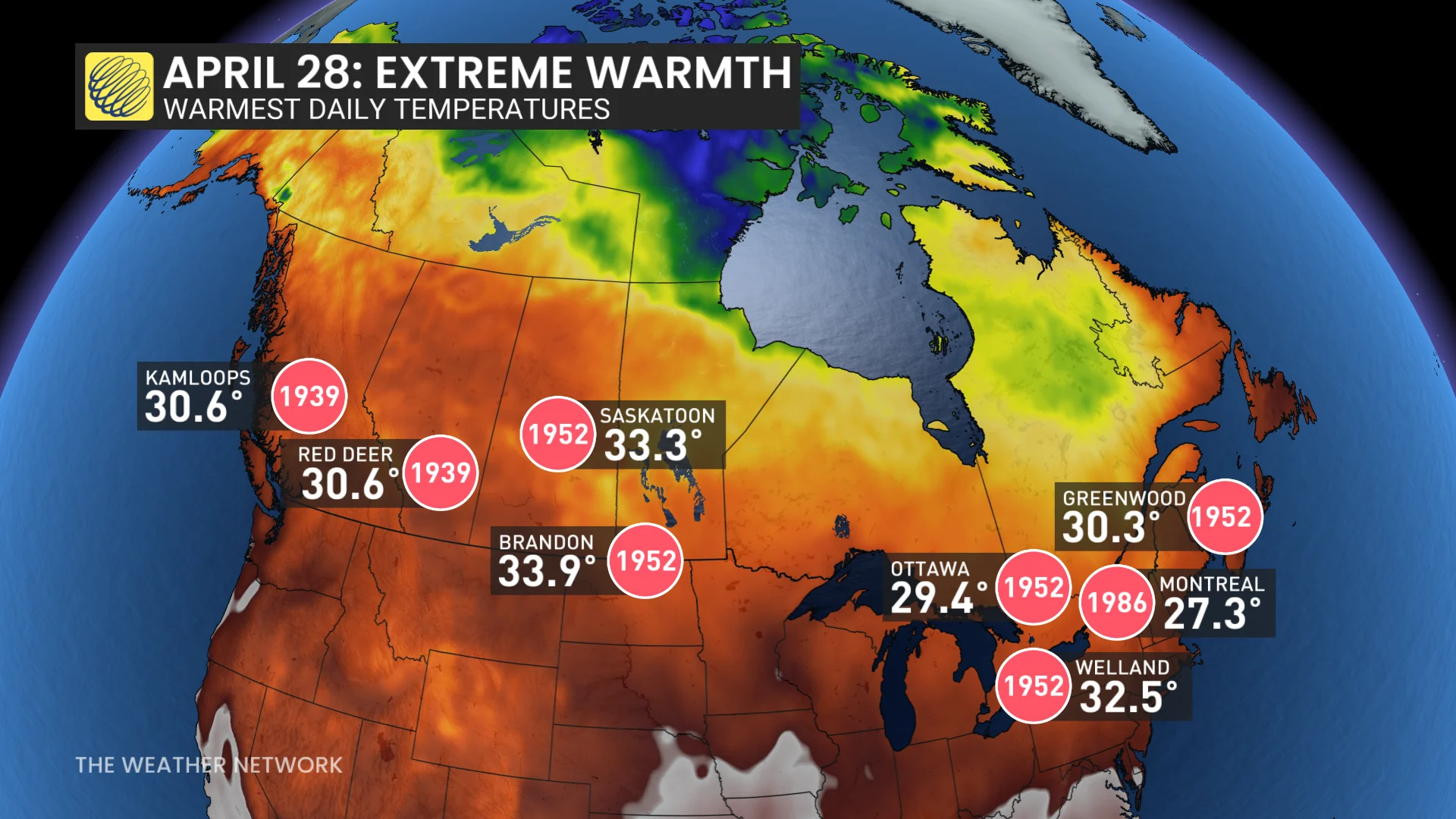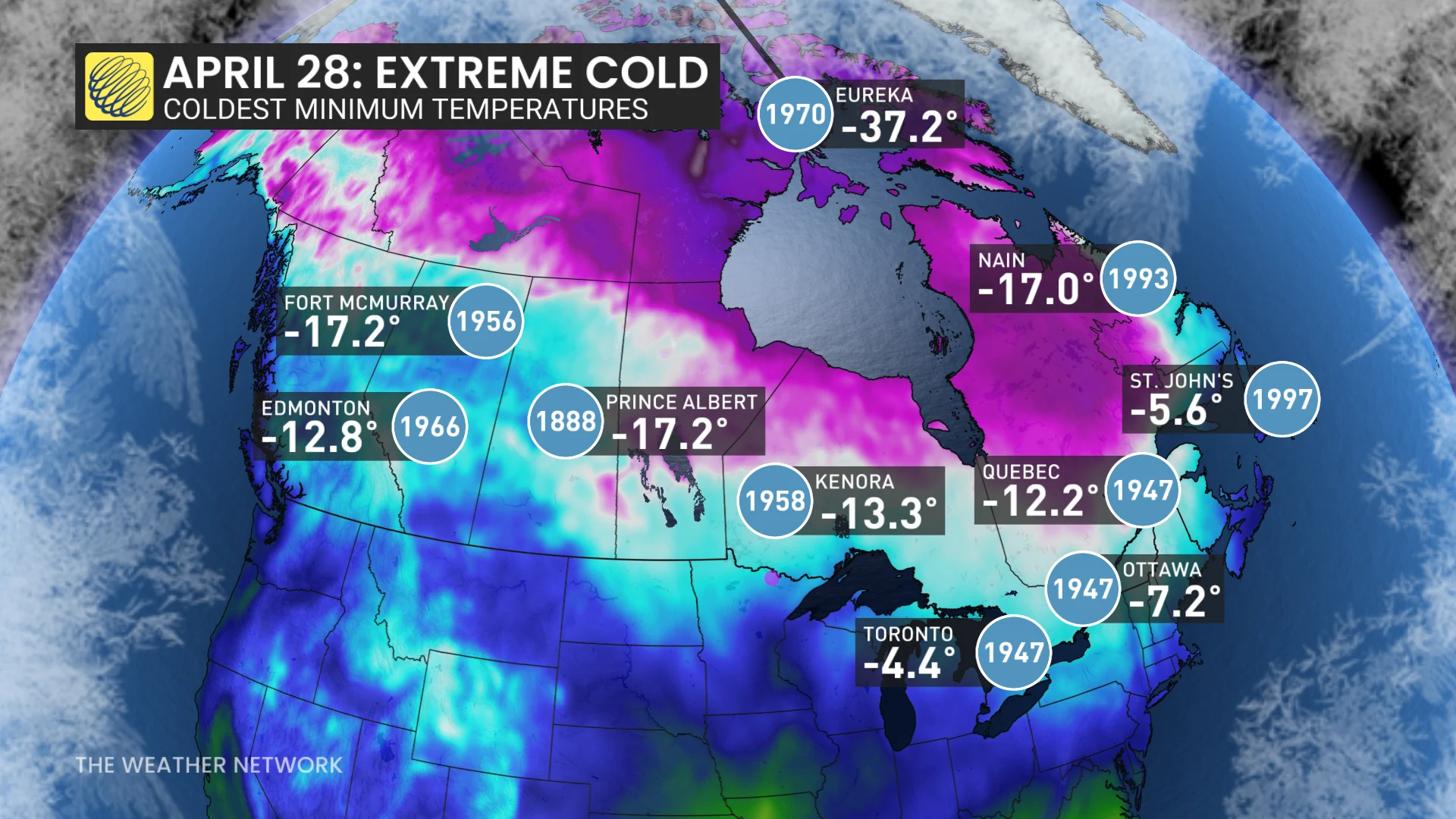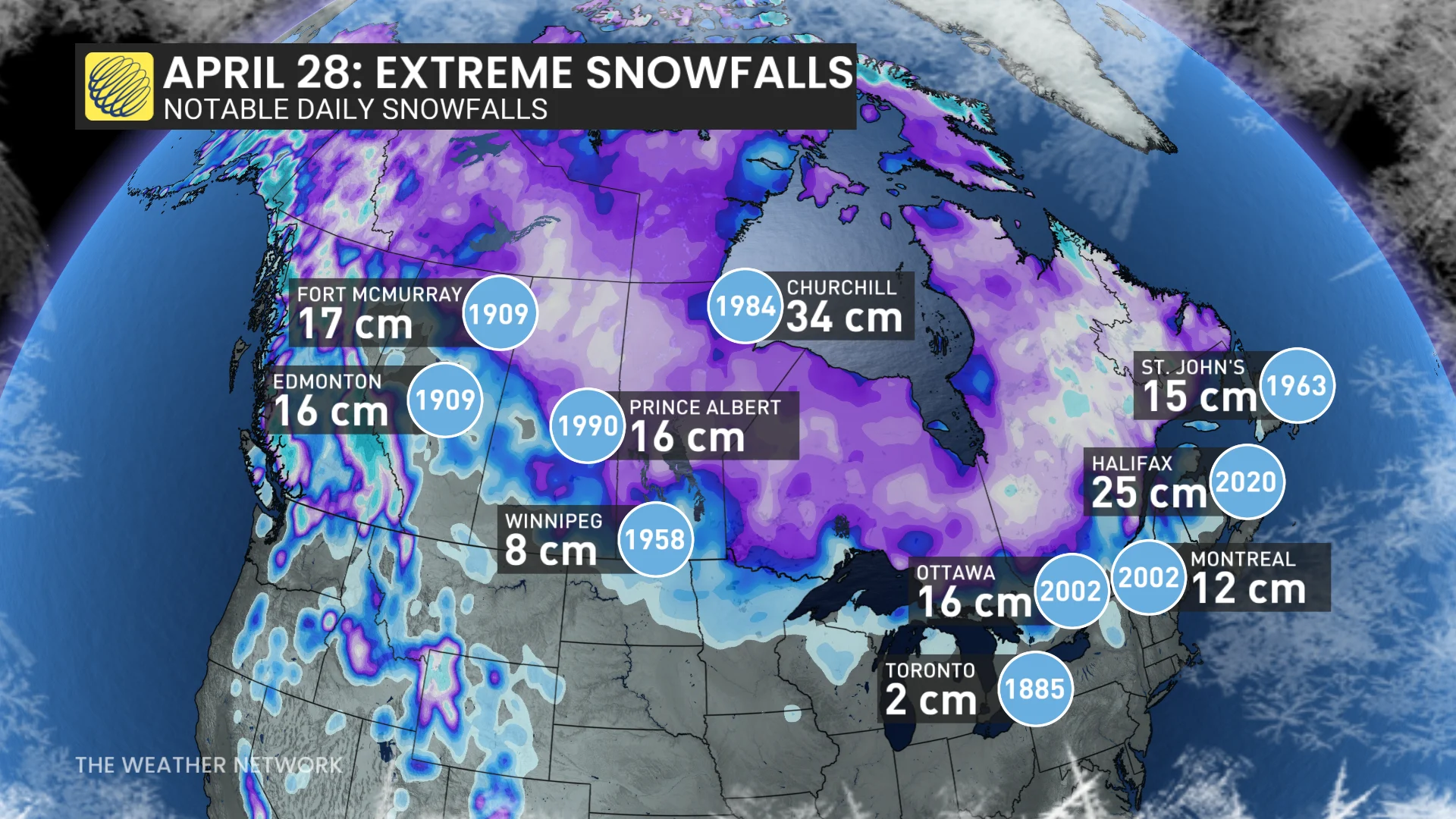
What weather can Canadian voters expect on April 28? A historical look
Canadians should prepare for variety. Whether casting a ballot in boots and jackets or in T-shirts and shorts, April 28’s weather will once again reflect the country’s vast, geographic diversity—–and its famously wild springs.
Canada’s snap federal election is set for April 28, and while the political forecast is anyone’s guess, the weather has its own track record.
April 28 is a unique date when it comes to Canadian weather. It sits in the heart of Canada’s spring transition season––a time when voters could encounter anything from sunshine to snow, depending on where they live.
Visit our Complete Guide to Spring 2025 for an in-depth look at the Spring Forecast, tips to plan for it and much more!
In Vancouver, B.C., daytime highs typically reach 15°C, while cities like Toronto, Ont., and Montreal, Que., average around 14°C. Meanwhile, the Prairies and northern regions often still wake up to temperatures below freezing and even threats of snowfall.
Historically, April 28 has delivered a wide range of weather. The warmest April 28 on record in Canada saw temperatures soar above 30°C in Saskatchewan in 2001, while snow has blanketed regions as far south as Calgary, Alta., and Winnipeg, Man. Measurable snowfall has occurred on this date in multiple provinces, a reminder that winter can still make a late-season appearance.
April 28: Extreme highs (warmest daily temperatures)
Brandon, Man., sizzled at 33.9°C in 1952, with Saskatoon, Sask., not far behind at 33.3°C––more like mid-July than late April.
Welland, Ont., reached 32.5°C in 1952, while Ottawa, Ont., soared to 29.4°C.

Kamloops, B.C., and Red Deer, Alta., both saw 30.6°C in 1939, a reminder that western heat can flare early.
April 28: Extreme cold (coldest minimum temperatures)
Eureka, Nvt., recorded a bone-chilling -37.2°C in 1970, the coldest April 28 temperature on record in Canada.
Prince Albert, Sask., and Fort McMurray, Alta., both dropped to -17.2°C, highlighting how bitter the Prairies can still get late in April.
Even Ottawa managed to drop to -7.2°C in 1947, a sharp contrast to spring expectations.

St. John’s, N.L., hit -5.6°C in 1997, proving Atlantic Canada isn’t immune to late-season Arctic air.
The spread of 60°C between national cold and warm records on the same day is nothing short of astonishing.
April 28: Extreme snowfalls (notable daily totals)
Churchill, Man., received a whopping 34 cm of snow on April 28, 1984––topping the list.
Halifax picked up 25 cm as recently as 2020, showing how late-season storms still pack a punch.
Fort McMurray and Edmonton, Alta., saw 17 cm and 16 cm, respectively, in 1909, underscoring the spring snow threat in Alberta.

Even Toronto recorded two cm of snow way back in 1885, a rare sight for so late in the season.
Can we predict the exact weather on April 28?
Not quite—long-range models tend to have limited accuracy five weeks in advance. However, we can look to the broader spring forecast for some helpful clues.
But one thing’s certain: Canadians should prepare for variety. Whether casting a ballot in boots or in T-shirts and shorts, April 28’s weather will once again reflect the country’s vast geographic diversity—–and its famously wild springs.
